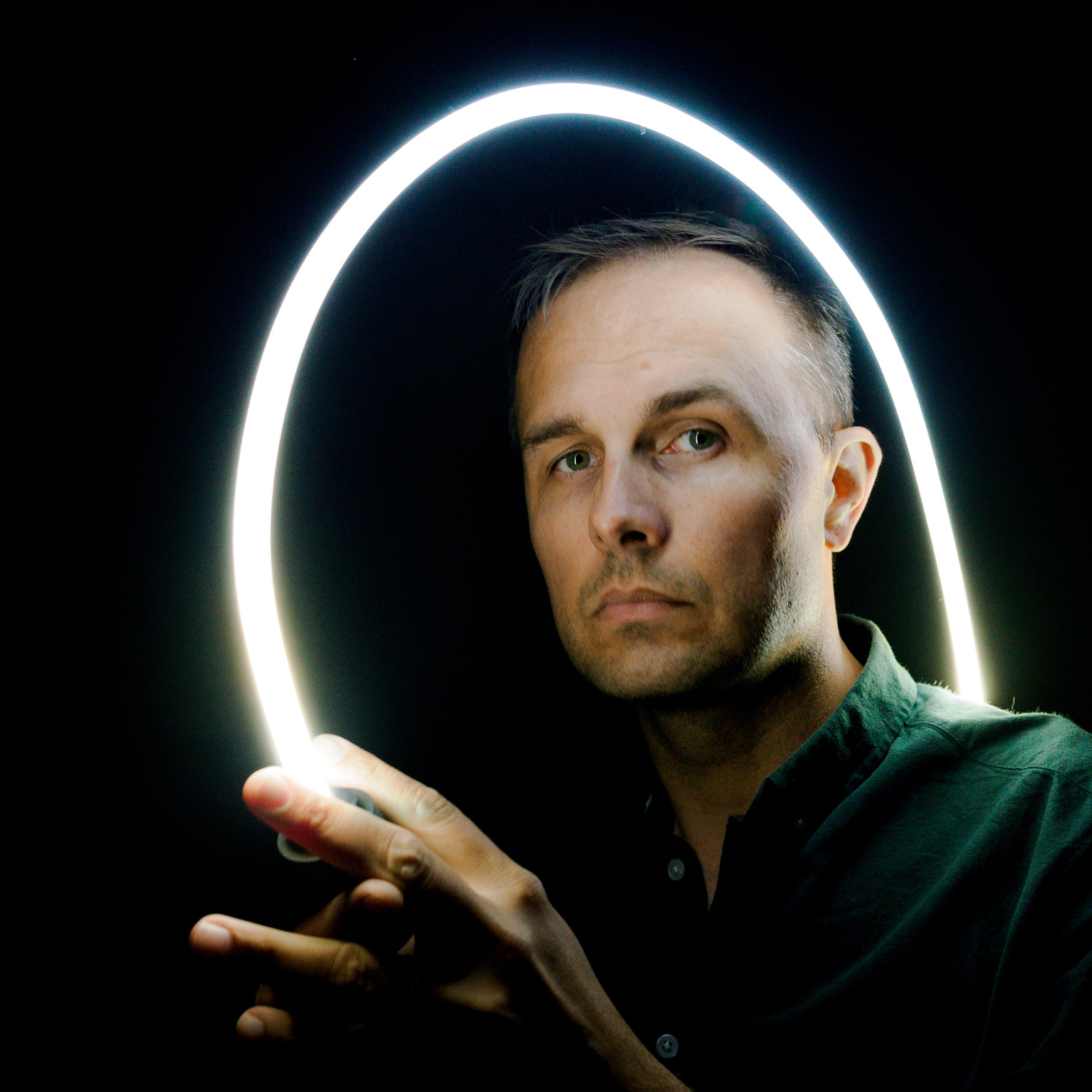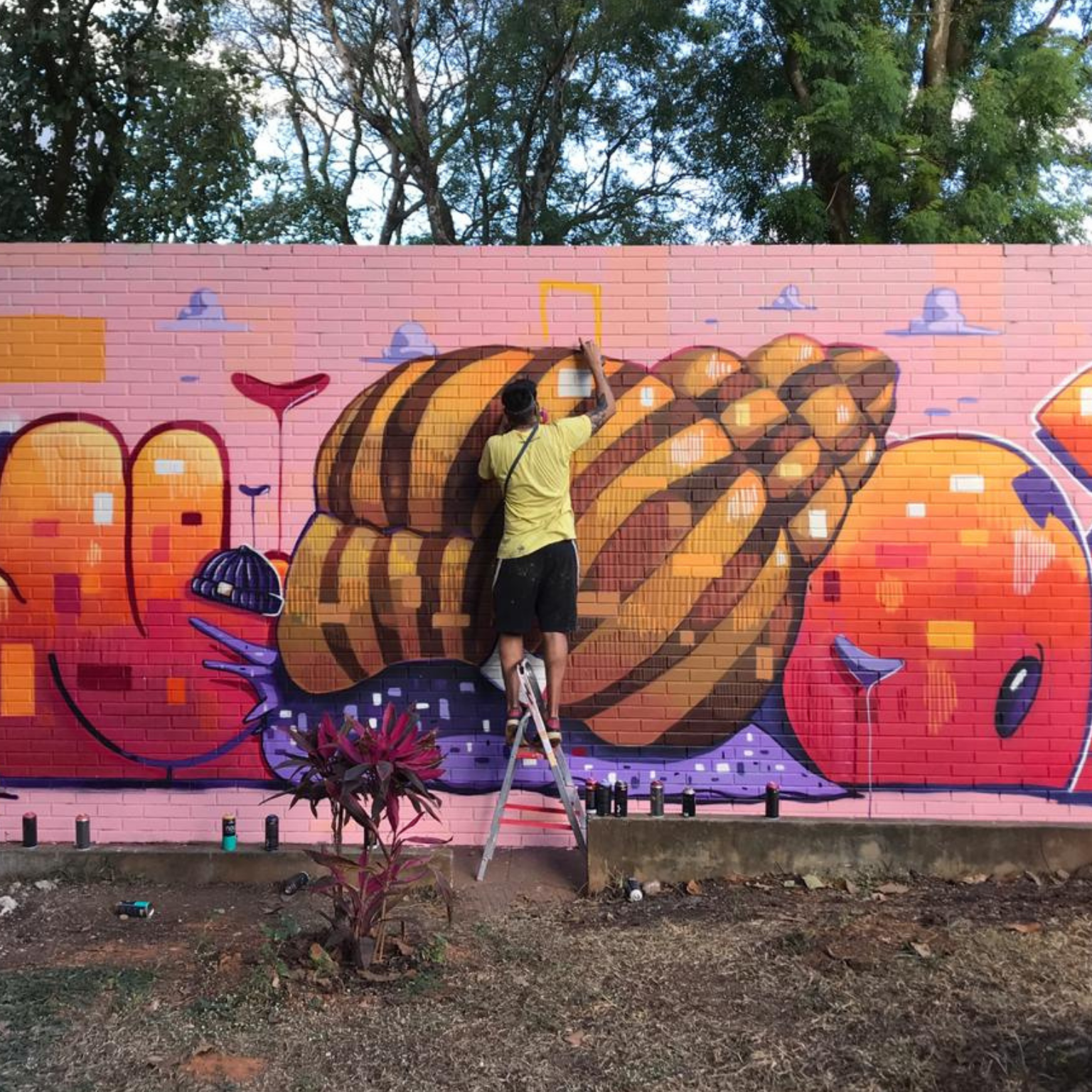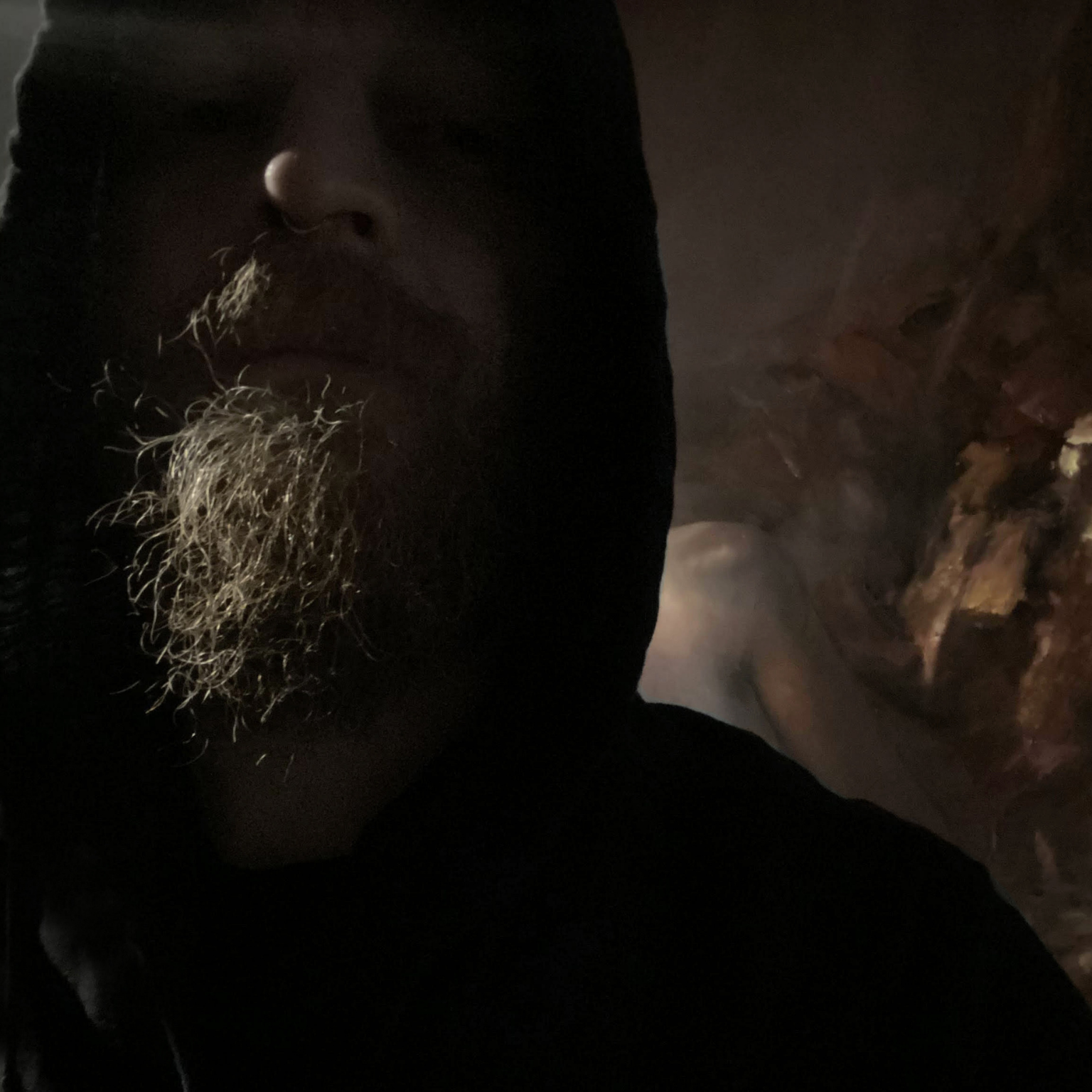Hannu Huhtamo, light painter and photographer from Finland. Photo © Courtesy of the artist
Tell us what you do and your beginnings.
My interest in drawing started at a very early age. I filled my school books and every piece of paper with all kinds of monsters, superhero characters, and graffiti-style texts. Later, I got interested in playing guitar and wanted to create a career as a musician. I studied at the Pop & Jazz Conservatory in Helsinki, and after graduation, I worked for a few years as a gigging musician.
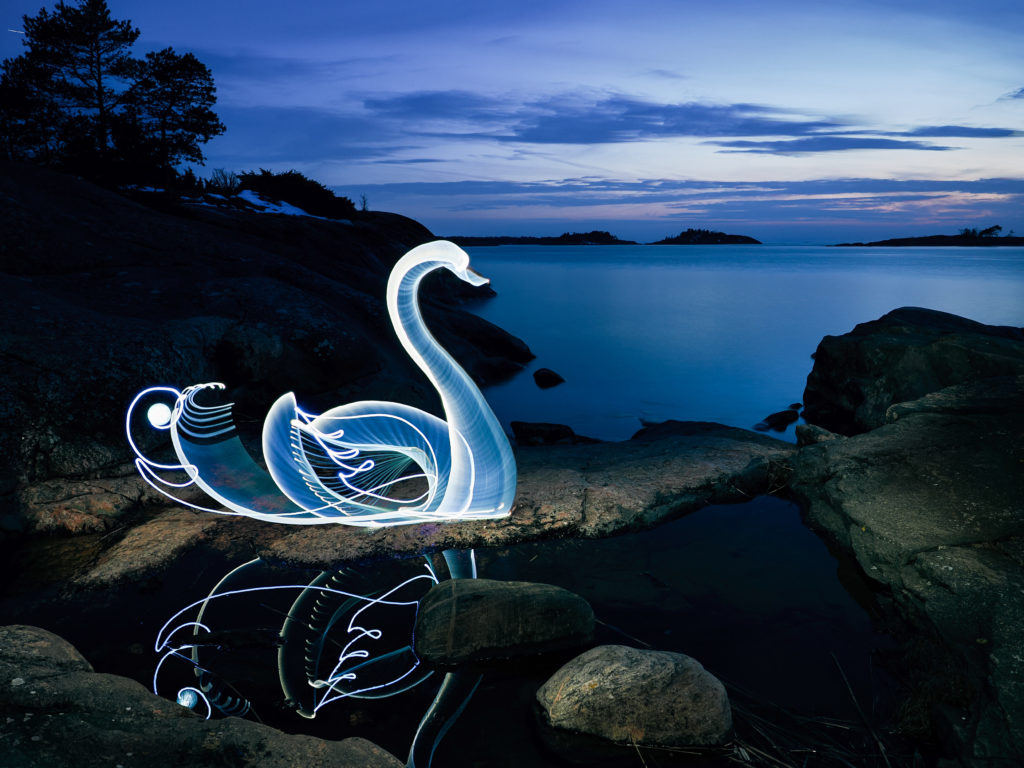
“A few years ago I practiced how to do my version of swans, but the implementation in a proper location didn’t happen right away. The basic idea of the photo was to create a dreamy scene where two swan-like creatures are floating calmly in the water with a glowing sunset in the background. After I published this shot, it went viral and it got featured in various magazines and news channels. It’s probably my most well-known light painting at the moment”.
During these years I didn’t draw much, but about 15 years ago I got more into photography. A friend of mine introduced the concept of light painting by showing his experiments with small LED lights and long exposure times. I was blown away by the images I saw. All those colorful light trails in various locations made a strong impact.
How can the person who did the light trails not be seen in the picture? It felt magical, mainly because there was no photo manipulation involved. Every image was straight out of the camera. I’ve always liked the idea that everything you see in the image has happened. I started searching for more information about long-exposure photography and light painting techniques. I bought myself a DSLR camera, small flashlights, and kids’ light toys.
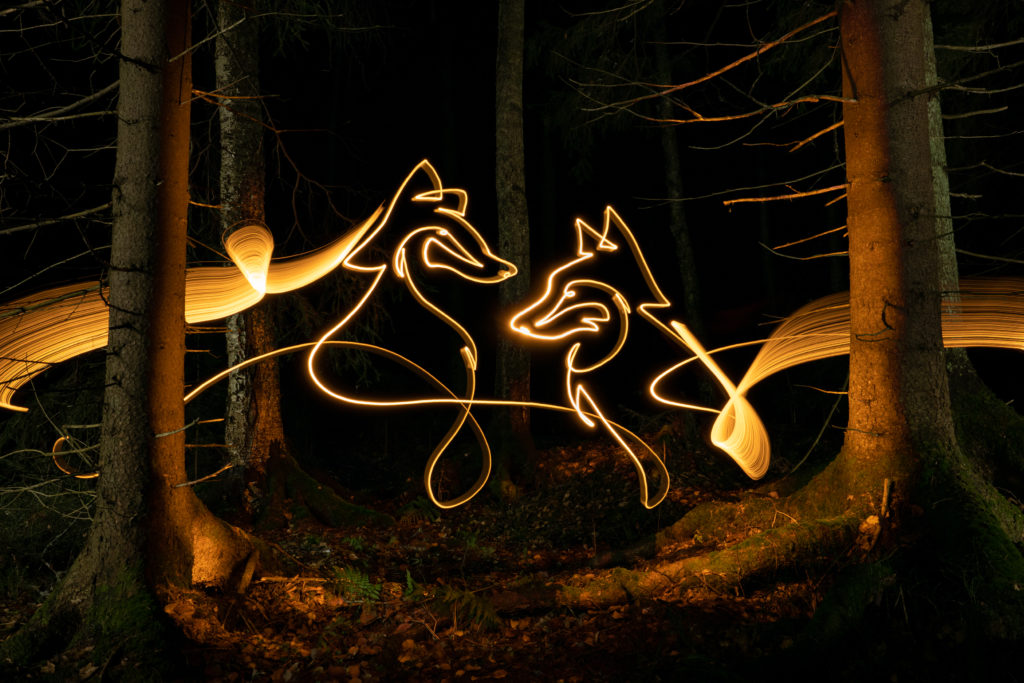
“A fox couple in the middle of the forest. Most of the light paintings in my animal-themed series are done with a single continuous line. It helps me to operate in pitch-black conditions. When I can’t see the surroundings, I can only rely on my muscle memory”.
It was fun and addictive to experiment and learn how to create different kinds of light shapes. A whole new world opened to me. At that time the best place to learn these things and meet people with common interests was Flickr’s community.
What does your work aim to say?
I’m describing my connection with nature and how differently the passage of time can be experienced. The long exposure time creates a strong feeling of time standing still. Light trails may be seen as different shapes in the middle of darkness. What is decisive is not a certain moment, but the path taken by the light in time and space.
I also want to explore how light can be bent to represent different organic forms. Ordinary forests or forgotten city outskirts turn into a stage for characters coming from the subconscious. Like hanging between two different worlds. Imaginary deep-sea creatures, minimalist animal figures, or flowers from another reality.
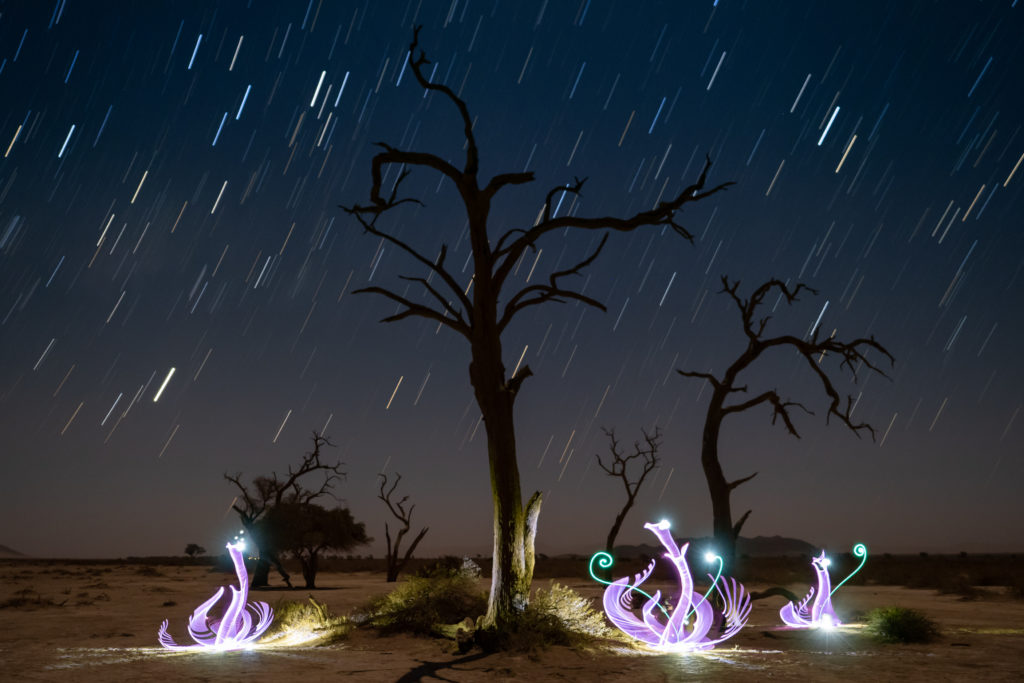
“This one is shot in the Namib Desert in the Sossusvlei region. It’s one of the world’s driest places, but once a year the seasonal rainfalls make the desert bloom. I wanted to recreate my version where the star trails rain down on the flowers”.
Where do you find inspiration for your art?
Nature itself offers so much inspiration. All the plants, microscopic world, or bioluminescent creatures of the deep sea. I take bits from here and there and combine interesting shapes into a single creation. Various things can trigger the creative process forward. It can be a good book, a movie, a musical piece, or another artist that inspires me to try new things.
On a bit more scientific view, light is one of the basic elements of our visual perception. It makes the world around us visible, but we cannot see the light itself. The camera’s long exposure time allows us to see the trajectories of light. Just by keeping the shutter open, we can record seconds or even hours into one single frame. Just for a moment, these shapes of light look like real physical objects. I still find this magical and take it as a huge source of inspiration.
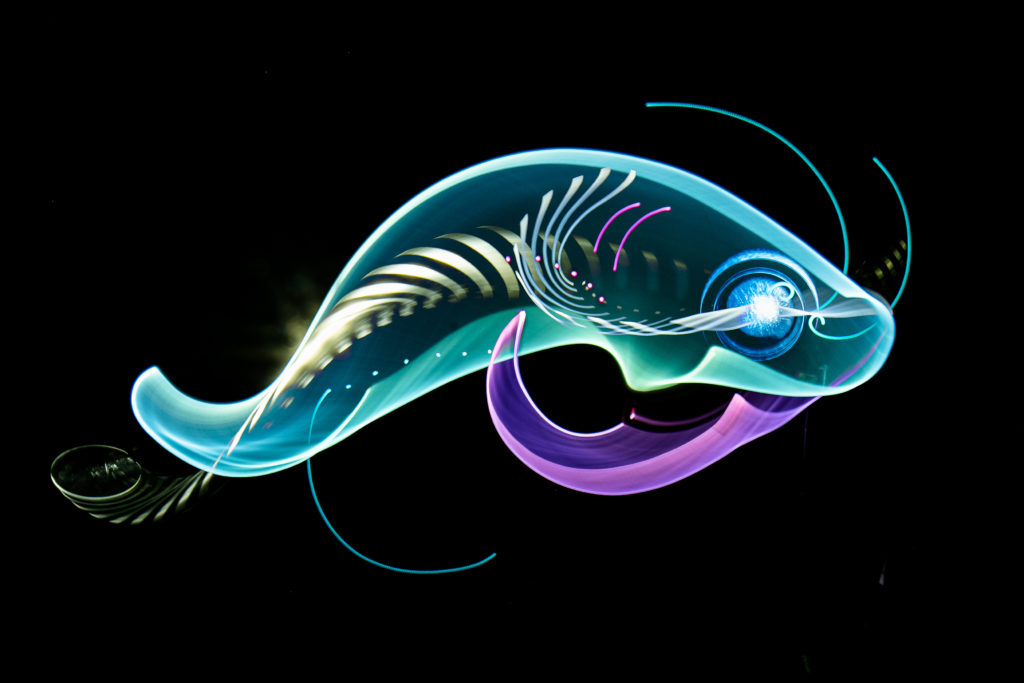
Could you give us some insight into your creative process?
First, I might do some simple sketches on paper. After that, I try to figure out how to do all these elements by using my light tools. I usually divide the shape into sections and then practice each part separately. Sometimes it’s like building up a choreography.
Finding the proper location for the light form is the most difficult step in the process because the environment needs to feel natural for the light character, and to also be dark enough for the light trails to appear clearly.
What are your future projects?
At the moment I’m planning an audio-visual piece together with my friend who is a musician and a composer. The work combines light painting, stop-motion animation, and music made out of nature’s soundscape. The project comments on the human connection with nature and the loss of biodiversity.
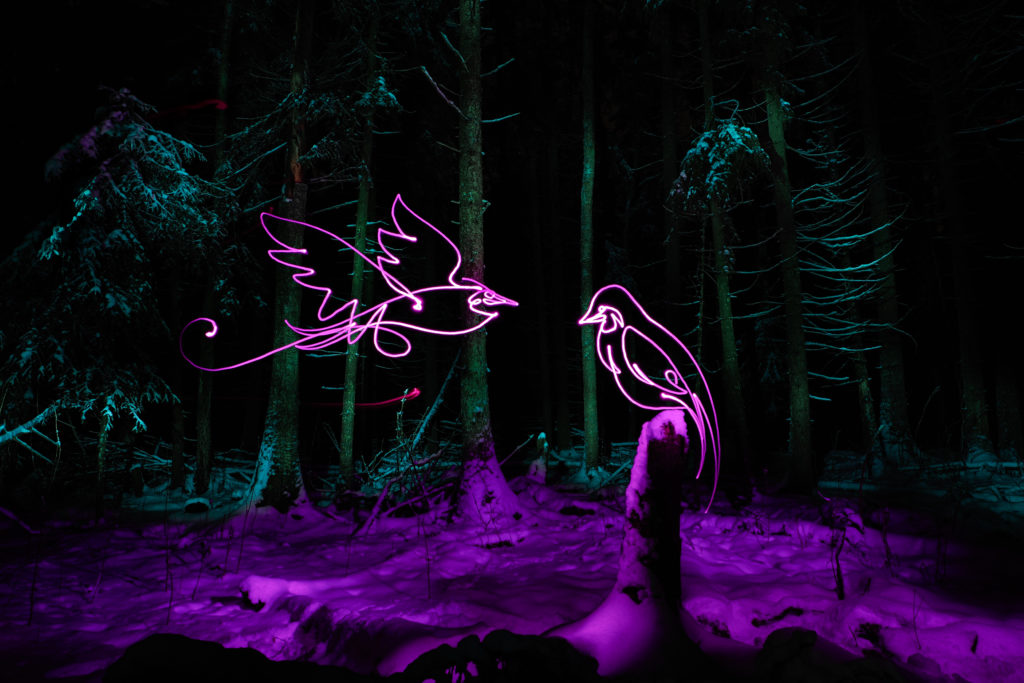
“I was walking in a primeval forest a few kilometers from our home and tried to find a good location for a photo. I noticed a broken tree and I felt that it would be great to draw something on it. I came up with the idea of two bird characters. The snowy background looked a bit boring, so I created some drama by lighting it up with a flashlight that had colored filters on it”.
Interview by Fabio Pariante: X • Instagram • Website
